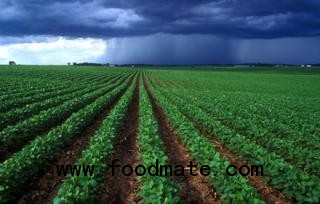
El Nino--the warming of sea-surface temperatures in the tropical Pacific Ocean--tends to bring heavy rains to southern Brazil, Paraguay and Argentina, providing ideal conditions for the South American grains crop if the timing is right.
"This El Nino is really very weak," Somar's Celso Oliveira told Dow Jones Newswires. "The simulations are showing that El Nino will end over the coming [Southern Hemisphere] summer, before the soy crop finishes."
An early end to El Nino would likely give way to what are known as neutral conditions, which Mr. Oliveira characterized as "very dangerous" for soybean farmers in the southern Brazilian states of Rio Grande do Sul, Santa Catarina and Parana.
Southern Brazil saw its soybean yields decline 35% this year from 2011 as a La Nina phenomenon brought a severe drought, according to government crop
agency Conab. La Nina refers to colder-than-average sea-surface temperatures in the equatorial Pacific, and has the inverse effect of El Nino for South American grains regions.
Neutral conditions aren't quite as bad as La Nina, and Mr. Oliveira noted that the prospects for southern Brazil still don't compare with the previous soybean crop.
"Last summer was extremely dry in the south," he said. "This spring is going to be very rainy, and the beginning of summer will also have some precipitation," he said.
But the southernmost states, particularly Rio Grande do Sul, plant their soybeans mainly in November--later than the main growing region in the center-west of the country.
"The most dangerous time frame for soy is February and March," Mr. Oliveira said. "The loss can be very significant because even if the dry period isn't long, it can coincide with flowering and pod-setting--the plants' most sensitive phases."
Southern Brazil is the country's second-most important grains region. Last year, farmers planted 9.1 million hectares of soybeans there, or 36% of Brazil's total acreage.





